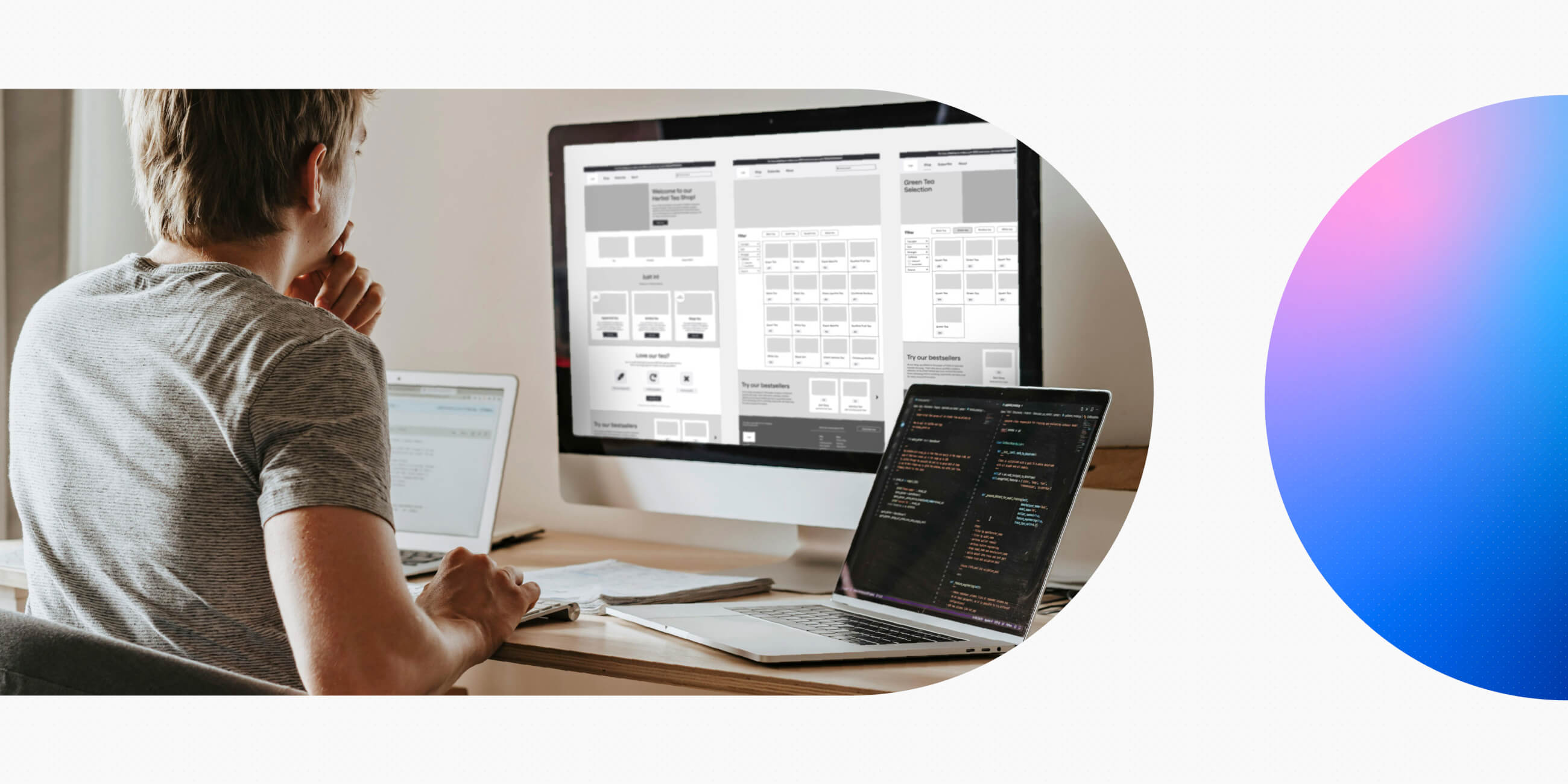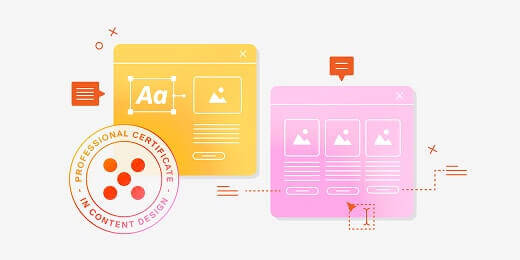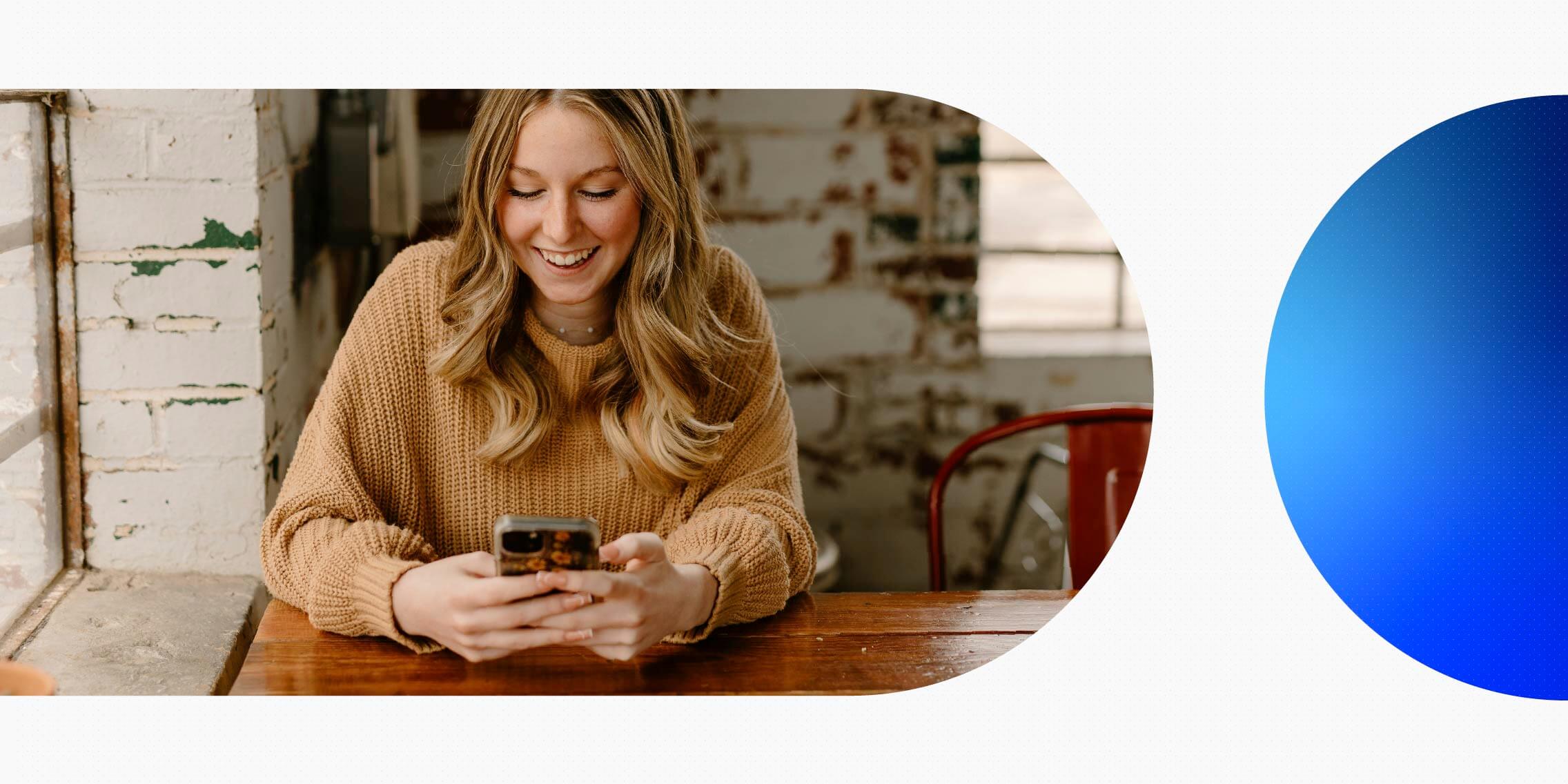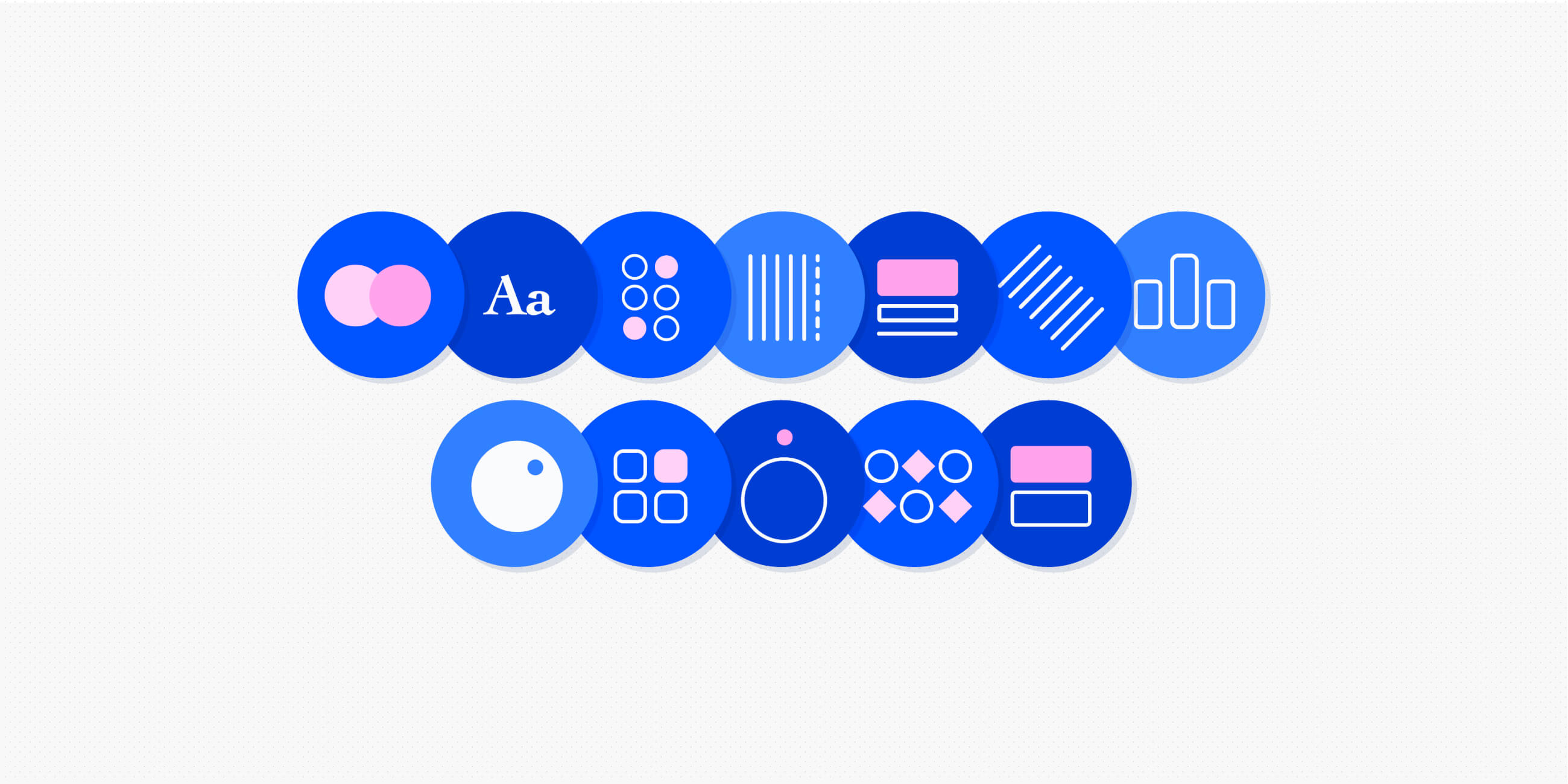What is content design?
Content design is the art of understanding the needs of users and designing content solutions that fit those needs. Content designers primarily do this through writing but content can also mean charts, videos, graphs, diagrams, or whatever form communicates the content best.
Content design and UX writing both aim to create user-focused content for products. The two job titles are therefore closely linked. However, UX writing is more focused on choosing the words that are used in a product, while content writing includes strategy as well, ensuring that the words and content are functional across product pages and products. Thus content designer is the more comprehensive job title.
It matters in digital design because language and other content should help shape the user experience. Typically, writing hasn’t been a factor in the early stages of the digital design process. UX designers have simply designed wireframes and prototypes with dummy copy. But more recently some companies have taken a more content-first design approach, making sure the words and other content work in harmony with their products’ visual design. This should increasingly become the norm as people come to recognise the value of content design.
The importance of a content design process
A content design process is essential to ensuring that content designers stay in the loop from the beginning of a product’s design process. In addition, a structured content design process helps improve the user experience of your products because the words and messages are integrated with the visual design.
If you don’t consider the content until late in the process, the content designer is simply given a series of boxes where they must cram their words or other content in. But working with them throughout the product design process ensures that their content is accounted for, making the content more usable, more consistent, and more delightful in conjunction with the visuals and ensuring better collaboration with UX and UI designers.
A step-by-step guide to the content design process
The digital design process in general is linked to the content design process. Therefore the content design process closely resembles the digital design process, with some tweaks to make it content-specific.
1. Understand the problem
This phase is all about doing research to understand the core problems of the project. While you may have your own opinions, they may not be the same as your users, so make sure you analyse user feedback, conduct surveys, do user interviews, and study analytics to spot trends in the data that will point you to what users of your product want.
2. Define user needs
Based on your findings in the previous step, you should define users’ needs for the product. Make sure you understand what elements are most important for fulfilling these needs as you move forward.
3. Map the user journey and content touchpoints
In collaboration with designers you should map the user journey across different channels including mobile and web. You should ensure that you understand where key content interactions and decisions will happen throughout the user experience and make sure this is reflected in the content strategy.
4. Draft content in collaboration with designers
Text, words, and other pieces of content should be developed in collaboration with designers and researchers. While lorem ipsum will be used by designers as placeholder for text, you shouldn’t let it be there for long. Instead, fill up that space with your words or other content, and let designers know if it’s not enough space, too much space, or if you have a plan for some other piece of content besides words, like a graph or a video.
5. Iterate and refine
As the design process goes on, the words and other content may change. In this part of the process you should iterate on the content to make sure it is the best it can be. The design may also change necessitating changes in the content too.
6. Test and validate
User tests should be conducted with the content designer as either an observer or as the researcher themselves. That way, they can ensure their questions will be answered during the test. Testing should lead to the content being validated or to another round of ideation.
7. Finalise and hand off for implementation
Make sure the content is as perfect as it can be before you hand it off to the development team for implementation. And make sure the development team know how to reach you should they need to during the implementation process.
Tools to support the content design process
There are many tools that content designers can use to help them in their work. These are the best tools to help you research, design, and collaborate.
- Word or Google Docs
If you’d like to write your content in a document before sharing it with the world, these are your go-to resources.
- Figma: This cloud-based design and prototyping tool allows you to put your content right in the user interface as it is built. It also allows feedback so you can iterate on your designs.
- Ditto: This tool is a Figma plugin that manages text as components, making it great for consistency across pages and products.
- Notion: This collaborative tool allows you to bring together and share all your project documents in one place.
- Miro: An online whiteboard tool for real-time collaboration or asynchronous teamwork.
- Hemingway: A web-based tool that helps you improve the clarity of your writing by championing clear, concise content.
AI-powered tools for content designers
There are also several AI-powered tools for content designers. These tools can be used as an addition to your content design practice.
- Grammarly: An AI-powered tool that offers corrections to your content as you write it.
- Writer: A generative AI tool that helps companies come up with content based on their particular guidelines.
- ChatGPT: An AI assistant that provides support for content designers’ writing.
Tips and best practices for an effective content design process
Collaborate early and often
Some members of the UX team may want to limit your involvement or may do so because they aren’t used to content designers on their team. You can eliminate those obstacles by collaborating with other members of the team early and often. Share research, user journey maps, and any and all content you think should be included throughout the project. This will help you avoid simply fitting your content into the boxes UX designers give you and instead allow you to design the content.
Prioritise clarity
You should use simple language in a consistent voice that’s easy for users to understand. Don’t use jargon as much as possible, and use short sentences and paragraphs. This is far easier to navigate and read than long sentences full of technical terms. And make paragraphs flow with visual cues, including headings, bullet points, bold, and italics that guide the user’s eye.
Maintain documentation
You should maintain documentation for all you do, including everything you write, even if it’s not the final product. You should have some sort of version control for your documents so nothing is lost when you start a new version. That way, should you need to, going back to consult a previous version of your documents is easy.
Design for accessibility
Content should be accessible to as many users of varying abilities as possible. This means that there should be versions of your copy and other content in place that are for those who have visual, auditory, learning and cognitive, motor, and other types of disabilities. Learn more about accessible design here.
Give users only what they need
Content designers can sometimes fall prey to the desire to give users all the information they could possibly want about a given task or problem. But sometimes giving users everything, like additional context or information, actually makes committing to a decision harder. To avoid this, make sure you do comprehensive user research that tells you exactly how much your users need to know and make sure you only give them that information.
Make content easy for users to find and access
Users can’t interact with content they can’t find so make sure your content is findable through navigation, labeling, search functionality, and content hierarchy. Menus should be clearly structured, labels should be descriptive but brief, and content should be organised so it guides users from the very general to the very specific in your product.
The takeaway
Here are key takeaways about the content design process:
- Content design is understanding user’s needs and designing content, primarily writing, that fits those needs.
- Content design matters because language and other content helps shape the user experience.
- A content design process is important because it ensures that content designers are involved with the project from the beginning. It also ensures the user experience, including the usability and consistency of your product, is better from the project’s earliest stages.
- The steps to having a content design process are: Understand the problem, define user needs, map the user journey and content touchpoints, draft content in collaboration with designers, iterate and refine, test and validate, and finalise and hand off for implementation.
- Here are some of the best tools to support the content design process: Word or Google Docs, Figma, Ditto, Notion, Miro, and Hemingway. Some of the best AI tools are: Grammarly, Writer, and ChatGPT.
- Tips and best practices for an effective content design process include: Collaborate early and often, prioritise clarity, maintain documentation, design for accessibility, give users only what they need, and make content easy for users to find and access.
Learn more about content design
If you believe you have what it takes to become a content designer or a UX writer, take UX Design Institute’s Professional Certificate in Content Design and learn all the skills you need to start a career in the field.
And if you’d like to read more about content design, check out these posts from the UX Design Institute’s blog:





